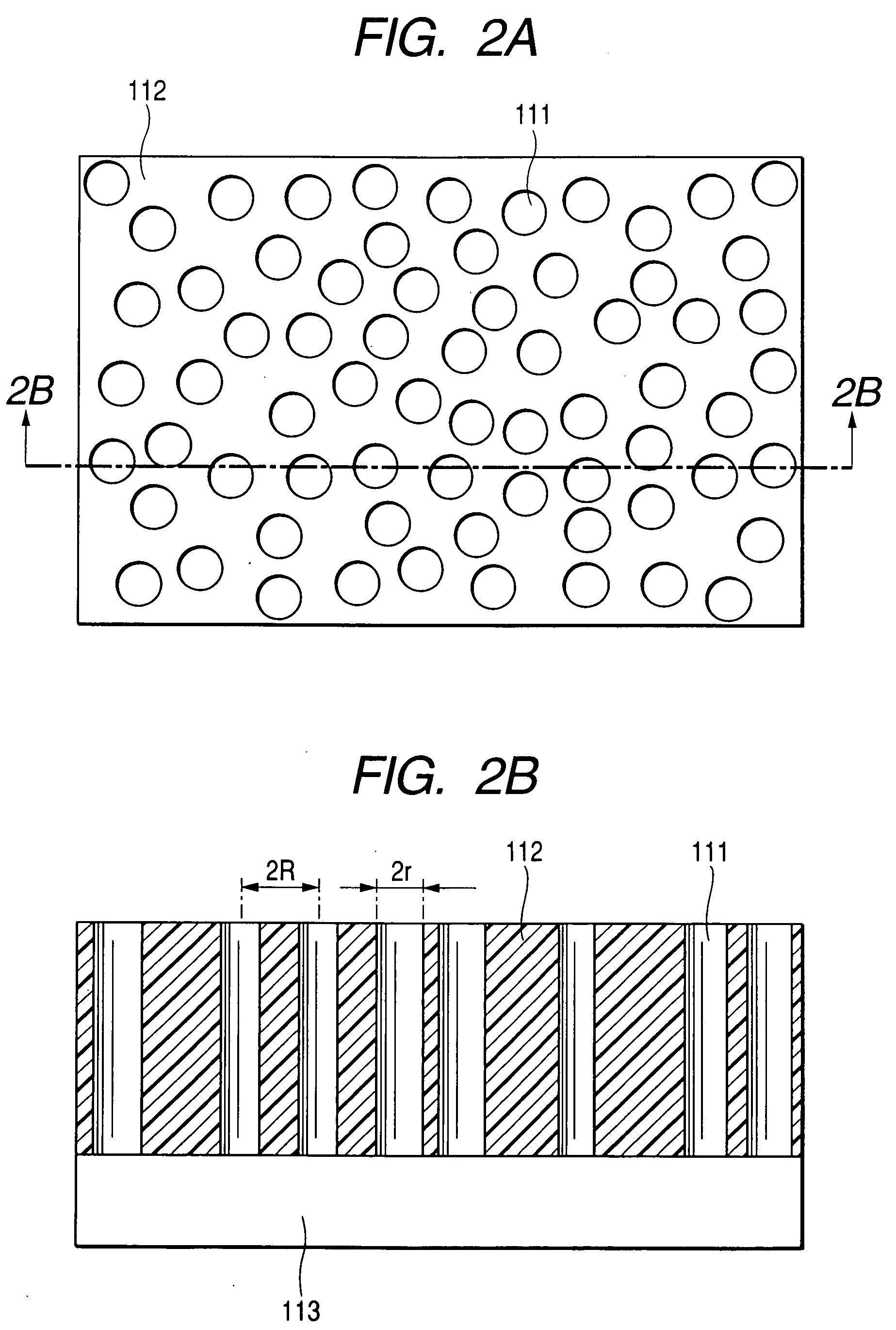Field-effect transistor, sensor using it, and production method thereof
a field-effect transistor and sensor technology, applied in the field of field-effect transistors, can solve the problems of difficult to make biomolecules carried into the pores in high density, difficult to control the diameter of the pores, etc., and achieve the effect of raising the sensitivity of the sensor, reducing the cost of production, and improving the stability of the structur
- Summary
- Abstract
- Description
- Claims
- Application Information
AI Technical Summary
Benefits of technology
Problems solved by technology
Method used
Image
Examples
example 1
[0061] This example shows the case that a sensor having a porous film, having pores which is perpendicular to a substrate and has a cylindrical shape, on a sensitive section (a gate insulating film) of a field-effect transistor is used as a gas sensor. Here, although the case that a main component except oxygen is silicon as a material which constitutes the porous film is shown, it is possible to adapt almost similar sensor structure, production method, and effects also in the case that a main component except oxygen is germanium or a composite of silicon and germanium.
[0062] First, as shown in FIG. 6A, a 50-nm-thick silicon oxide film (a gate oxide film) is formed on a p-type single crystal silicon substrate by the thermal oxidation method. Next, an about 200-nm-thick aluminum silicon mixing film including 50 atomic % of aluminum to the whole amount of aluminum and silicon was formed on the silicon oxide, which is a gate insulating film, by using the magnetron sputtering method as...
example 2
[0069] This example shows the case that a sensor having a porous film, having pores which are perpendicular to the substrate and has cylindrical shapes, on a sensitive section (a gate insulating film) of a field-effect transistor is used as a biosensor. Here, the case that a main component which constitutes the porous film is a silicon oxide will be shown.
[0070] First, as shown in FIG. 6A, a 50-nm-thick silicon oxide film (a gate oxide film) is formed on a p-type single crystal silicon substrate by the thermal oxidation method. Next, an about 100-nm-thick aluminum silicon mixing film including 60 atomic % of aluminum to the whole amount of aluminum and silicon was formed on a gate insulating film, which was a sensitive section, by using the magnetron sputtering method. A circular aluminum silicon-mixing target with the diameter of 4 inches (101.6 mm) was used as a target. What aluminum powder and silicon powder were sintered at a ratio of 60 atomic %: 40 atomic % was used as the al...
example 3
[0079] This example shows the case that a sensor having a porous film, having pores which are perpendicular to a substrate and have cylindrical shapes, on a sensitive section (a gate insulating film) of a field-effect transistor is used as a pH sensor measuring pH of an acid and alkali solutions. Here, although the case that a material which constitutes the porous film is silicon except oxygen is shown, it is possible to adapt almost similar sensor structure, production method, and effects also in the case of germanium or a composite of silicon and germanium.
[0080] First, as shown in FIG. 6A, a 50-nm-thick silicon oxide film (a gate oxide film) is formed on a p-type single crystal silicon substrate by the thermal oxidation method. Next, on the silicon oxide film, an about 200-nm-thick aluminum silicon mixing film including 50 atomic % of aluminum to the whole amount of aluminum and silicon was formed on the silicon oxide, which is a gate insulating film, by using the magnetron sput...
PUM
| Property | Measurement | Unit |
|---|---|---|
| pore diameter | aaaaa | aaaaa |
| pore size | aaaaa | aaaaa |
| diameter | aaaaa | aaaaa |
Abstract
Description
Claims
Application Information
 Login to View More
Login to View More - Generate Ideas
- Intellectual Property
- Life Sciences
- Materials
- Tech Scout
- Unparalleled Data Quality
- Higher Quality Content
- 60% Fewer Hallucinations
Browse by: Latest US Patents, China's latest patents, Technical Efficacy Thesaurus, Application Domain, Technology Topic, Popular Technical Reports.
© 2025 PatSnap. All rights reserved.Legal|Privacy policy|Modern Slavery Act Transparency Statement|Sitemap|About US| Contact US: help@patsnap.com



